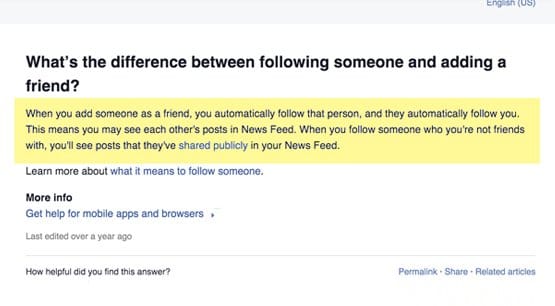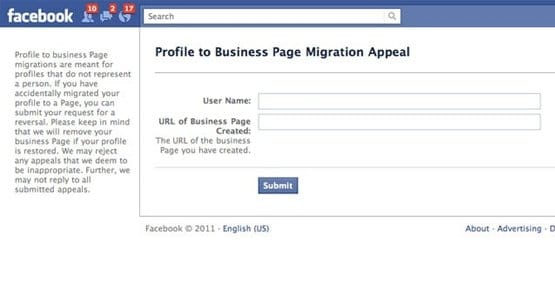How Many Facebook Friend Requests Can You Send Per Day?

Automation isn’t just for Facebook Pages. There are plenty of reasons why you might want to grow a personal profile as well.
- You’re a public figure and you’ve slipped through the cracks, able to grow a profile rather than a Page, like Facebook prefers.
- You’re a journalist or writer with multiple Pages for individual books or projects, but a central personal profile for your own personal brand.
- You’re an artist with a Page for professional work or a portfolio, but want to grow your personal brand outside of your work.
- You’re the owner of multiple businesses, so you have individual Pages for each of them, but keep a personal profile for yourself as CEO.
Now, the argument can be made that all of these are good cases for the “public figure” style of Facebook Page. In fact, the argument is made by Facebook, directly, fairly frequently. If your profile gains too many friends too quickly, or if they think for some reason you’re looking like a business or using your profile as you would a Page, they will create a copy of it and convert it to a Page immediately. They’ll then send you a warning saying you need to stop all business-like activity on your Profile, and that continuing to use a Profile as if it were a Page is enough to potentially get your account restricted.
And, of course, there are restrictions on actions you can take on Facebook. With a Page, there are no restrictions on the number of people who can follow you in a given day. It wouldn’t make sense for them to neuter the growth of a popular Page like that. Friend requests, however, are another thing entirely.
Friends Vs. Follows
The Facebook “friend” relationship is interesting in comparison to other social networks and other relationships. Where most other sites are one-way follows, Facebook’s friend requests form the backbone of a reciprocal relationship. You can’t be friends with someone without both parties consenting, and either party can sever the relationship.
Part of the reason Facebook does as much as they can to put businesses and commercial figures into Pages and leave Profiles to individuals is a liability issue. Facebook is an absolute haven for immense amounts of personal data. An individual is most susceptible to that data being visible when they’re friends with someone.
A Page can only see so much data about one of its followers. There’s no way, for example, to pull a complete list of every user who follows your Page. You can’t dig into their profiles and learn about them individually. You have access to all of that data, but it’s in anonymized, aggregate formats via analytics. You can see that 53% of your audience is female, but you can’t export a list of the names of everyone who identifies as female in your audience.
One risk if people were able to use profiles instead of Pages is that unscrupulous people might scrape and harvest data that is protected legally. Yes, individuals are able to adjust their privacy settings such that certain friends are on lists with more restricted privacy policies, but realistically very few users actually do so.
In order to prevent most of the potential liability, Facebook simply put it in their rules that you can’t use a profile as you would a Page. They’ve added plenty of features – analytics, ads, etc – to make Pages more attractive to businesses and public figures. And when they encounter anyone breaking the rules, they take action.
Rules and Limitations
There are, as you might expect, a handful of rules, regulations, and limitations built into the friend relationship on Facebook.
First of all, one thing you should know is that, built into the Friend relationship is also a one-sided follow. This exists specifically to allow Facebook to give you the option to unfollow people while still keeping them your friends. This is most often used when a friend of yours – or a family member – constantly posts and shares content you don’t want to see.
Normally, the follow option is soft-hidden from people on Facebook. You follow people when you friend them, and you can un-follow them. If a friend does not follow you, they can follow you. However, non-friends cannot follow you.
That is, unless you change the setting. On that settings page, up at the top, there is a box that shows who can follow your account. You can change this to “public” if you want anyone at all to be able to follow you. If you’re trying to make a personal profile with public figure influence, this is how you can allow it to happen. Incidentally, this is also where you can find the code to embed a follow button for your profile.
It should also be noted that the “follows” metric only counts people who follow but are not friends with a user. My personal profile has ~250 friends, but only one follower, who is not a friend. This is important, because it means you can have the maximum number of friends and still have zero followers if no one else has followed you.
Second, there is a hard limit to the number of friends that any given profile can have. That hard limit is 5,000 people. Once you reach 5,000 friends, Facebook decides your social circle is large enough and removes your ability to add more friends. The only exception is to “trick” Facebook by taking action very quickly. One guy in this help center thread very helpfully claims he was at 4,999 friends and accepted two friend requests simultaneously, ending up at 5,001 friends.
Obviously, this +-1 friend is completely inconsequential. One additional friend makes no difference.
The friend limit does not apply to follows. This guy, for example, has 4,998 friends and an additional 7,747 followers.
Limits on Friend Requests
Now, the question in the title specifically asks if there are any limits on the number of friend requests you can send in a day. The answer is that there are not. You can send all 5,000 friend requests in one day if you want, and if you have 5,000 people you want to send a request to.
Okay, so that’s not strictly correct. There is no stated limit to the number of friend requests you can send per day, other than the 5,000 friend limit. However, there IS a limit to the number of pending, ignored friend requests you can have at a given time.
Facebook doesn’t explicitly state this number anywhere, but people making assumptions and people experiencing the repercussions concur that it’s likely 1,000. That means you can send up to 1,000 friend requests in a day, or all together. Likely you can send a few more, since many of those people will accept before the day is over.
You can only have 1,000 ignored friend requests at a time before Facebook takes action. The action is to block your ability to send friend requests under the assumption that you’re a bot account and your requests are spam. Bots and spam are a big problem on social media, and on Facebook in particular, so it makes sense that they would want to cap off this activity.
Of course, it’s pretty rare that you have a list of over 1,000 people that you want to send a friend request to. Generally, if you’re trying to friend that many people, you’re probably just going down the member list of a group or a search results page and spamming those invites. In that case, you’re not really targeting the people you want to friend, and so it’s spam by any definition. Don’t do it.
The Real Solution
Honestly, there are very few reasons to use a profile rather than a Page. One of the most common objections I’ve heard is simply that you have too much investment in the profile to want to make a page and try to grow it from scratch. After all, if you’ve built up 5,000 friends and another thousand or two followers, that’s a heck of an audience to leave behind by making a page.
Luckily for you, Facebook implemented a process to circumvent that objection. Rather than making a new Page from scratch and trying to invite all of your friends and followers, you can migrate.
The migrate process basically just creates a copy of your profile, in the format of a Page. The Page’s name will be your name, the cover photo and profile picture will be yours, and they provide a wizard to help migrate information over to the About section, milestones, and other Page settings. Most importantly, your friends on Facebook will automatically follow your Page, unless you explicitly tell Facebook not to do that.
Posts from your profile will not be carried over to your new Page, and they are not the same account. You manage them both from your one account, but they are different sites with different URLs and different features. You have two; you aren’t converting, you’re copying.
There are a lot of good reasons to make this migration. For example, Pages have access to analytics about their audience, which you can’t see as a personal user. All of that reach, targeting, and demographics information is completely unavailable to a personal profile, making it much more difficult to run split tests or target your audience specifically. Not to mention all of the business tools that are available to Pages but not to profiles.
There’s also the matter of reach. Facebook filters a lot of the posts that go through organic feeds. The common statistic is something like 350 out of the possible 2,500 posts you could see each day make it across your feed. You can manipulate a feed to see more, by showing Most Recent or by manually following people, but you’re still not guaranteed to see everything anyone posts, nor are you guaranteed to see it in a timely manner.
This isn’t a great position to be in as a brand owner or public figure. You want as many people as possible to see your content. Profile content is given an edge over Page content – since Facebook assumes users want to see stuff from friends and family ahead of brands and commercials – but engagement with either is crucial. If you’re a “brand” using a profile, you have to focus on getting engagement a lot more.
The reason for this is because, as a personal profile, you don’t have the option to pay to boost your posts. If a brand finds its reach is slipping and its Page posts aren’t doing so well, they can pay to promote a few posts and get engagement. A few bucks can go a long way towards getting those reach numbers back up. A personal profile simply lacks the facility to improve in this manner.
And, of course, there’s the ever-present risk that Facebook might decide you’re being too much like a Page and will simply make the migration happen for you. They decide you need to be using a Page now, they make one for you, and that’s the end of the argument. You can’t exactly fight back; if you delete the Page and keep using your profile, the next time they come around they’ll take stricter action, and then you’re out on your butt in the cold.








There must be a cap on how many friend requests you can accept in a given time span because I just got a message I used the function too fast and was temporarily blocked.